The most expensive horse breeds in the world have sold for millions of dollars. Selective breeding passes the most desirable characteristics down bloodlines, helping breeds retain their incredibly high prices. Each breed has distinctive qualities, and prices vary greatly.

Human history immortalized horses. Warhorses, plow horses, racehorses, and wild horses all have their place in human history.
Horses have been faithful companions, tireless workers, and legendary performers, from the Pony Express to traveling circuses. Interwoven with human experience for centuries, horses remain the favorite animals of both children and adults. In art and sculpture, portrayed with or without riders, horses inspire us with their form and beauty. Winning racehorses have made their owners millions, and betting on the horses has cost countless fortunes.
There is a mystique surrounding horses. Horsepower and expressions like “horsefeathers” punctuate our language. But owning them is something else entirely. Horses can be an indulgence, a family tradition, a business venture, a costly hobby, or a necessity for farmers and ranchers.
1. Thoroughbred
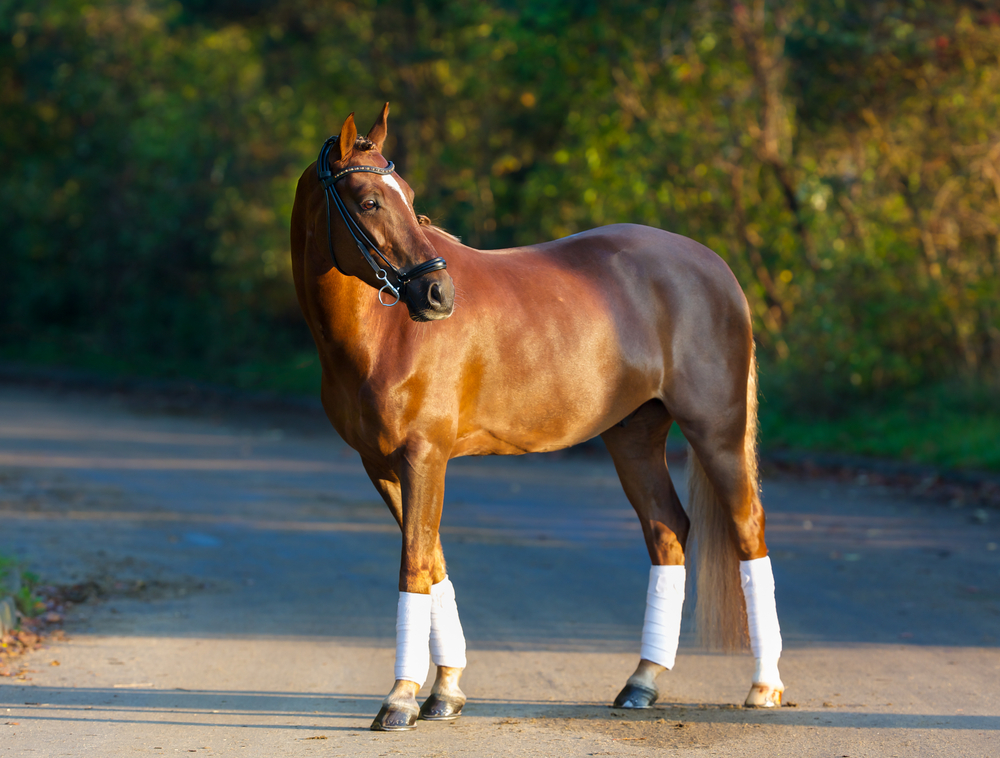
Price: The range is enormous: Yearlings from top bloodlines can sell for multiple millions.
The most expensive horse ever sold is Fusaichi Pegasus, a thoroughbred racehorse that won the 2000 Kentucky Derby. The horse sold for $70 million.
The 174 offspring of a single Thoroughbred sire, Northern Dancer, sold for a total of $160 million at Keeneland Sales over 22 years in the 1970s and 80s.
Who doesn’t appreciate the speed and grace of a well-trained racehorse? That’s precisely what Thoroughbreds are “designed” for, and no other single breed can compare! High prices, however, are not necessarily predictors of success at the track, and some promising horses never win a race. That’s what happened with The Green Monkey, a descendant of both Northern Dancer and Secretariat, who sold at auction in 2006 for $16 million, the highest price ever paid for a two-year-old. Sadly, the horse did not prove to be good at stud either, despite excellent bloodlines.
The most expensive horse breed in the world is Thoroughbreds. They have a history of excellence, better bloodlines, and the most expensive sire’s compared to other breeds.
2. Dutch Warmblood
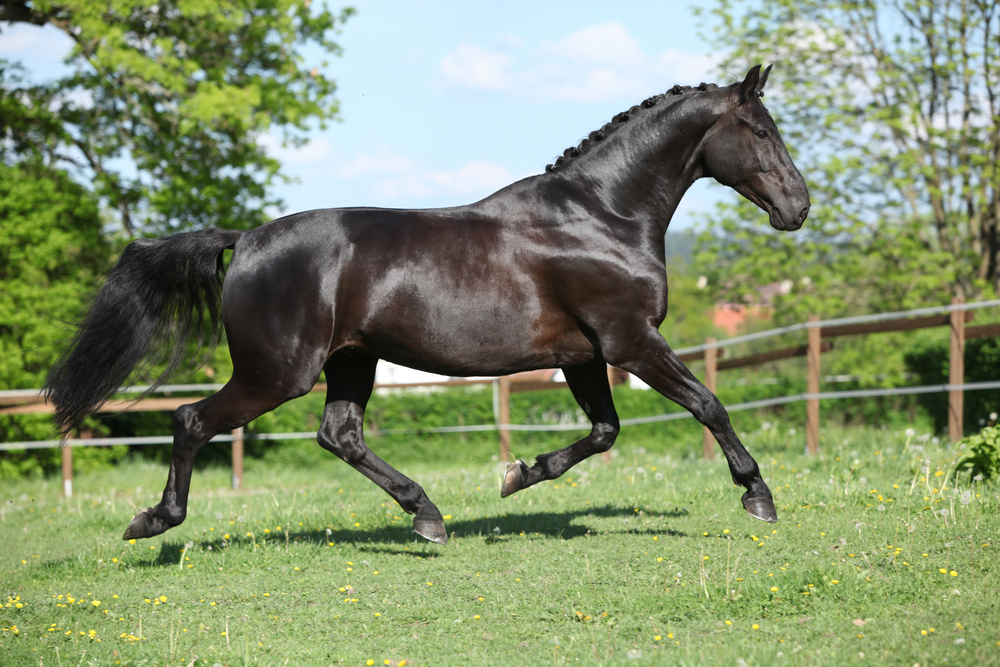
Price Range: From about $4,000 to several million dollars.
A black stallion named Totilas was sold for approximately 11 million Euros to a German trainer. This makes Totilas the most expensive Dutch Warmblood in the world.
A premium performance breed, the Dutch Warmblood is a big, impressive horse with a good temperament. Bred for jumping and dressage, the breed’s size, gait, and demeanor often earn ribbons and accolades at World Equestrian Games and Grand Prix competitions. Because of this, the Dutch Warmblood is one of the most expensive horse breeds you can buy.
The modern Dutch Warmblood derives from native Dutch breeds known as the Gelderlander and the Groningen. Later, Thoroughbred blood introduction improved the breed’s stamina and athleticism. Today, three categories of Dutch Warmblood are recognized. They include the athletic sports horse, the elegant harness horse, and the original Gelderland working horse types. Because it’s a relatively young breed, it continues to evolve.
3. Selle Francais
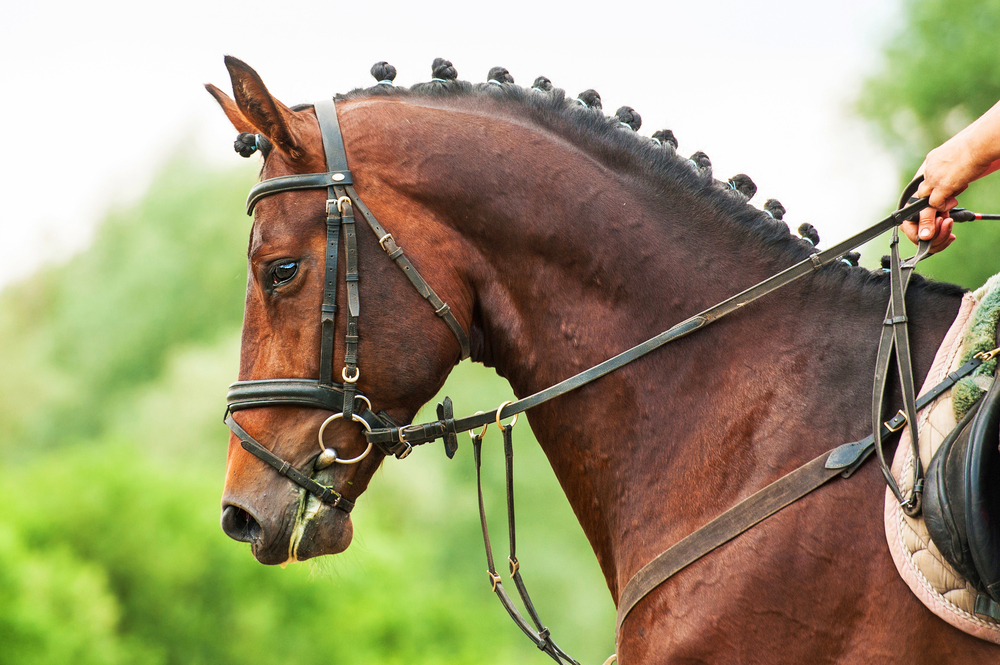
Price Range: Approximately $15,000 into the millions. In 2013, Palloubet d’Halong, a world champion Selle Francais, reportedly sold for $15 million.
After several centuries of cross-breeding, this new French sport horse was acknowledged as a unique breed only in 1958. Also known as a French Saddle Horse, the animals are usually bay or chestnut. White markings on lower legs are not uncommon. Known as show jumpers, intelligent and athletic Selle Francais horses also perform well in other categories, and some have become renowned as Olympic and Grand Prix performers.
4. Standardbred
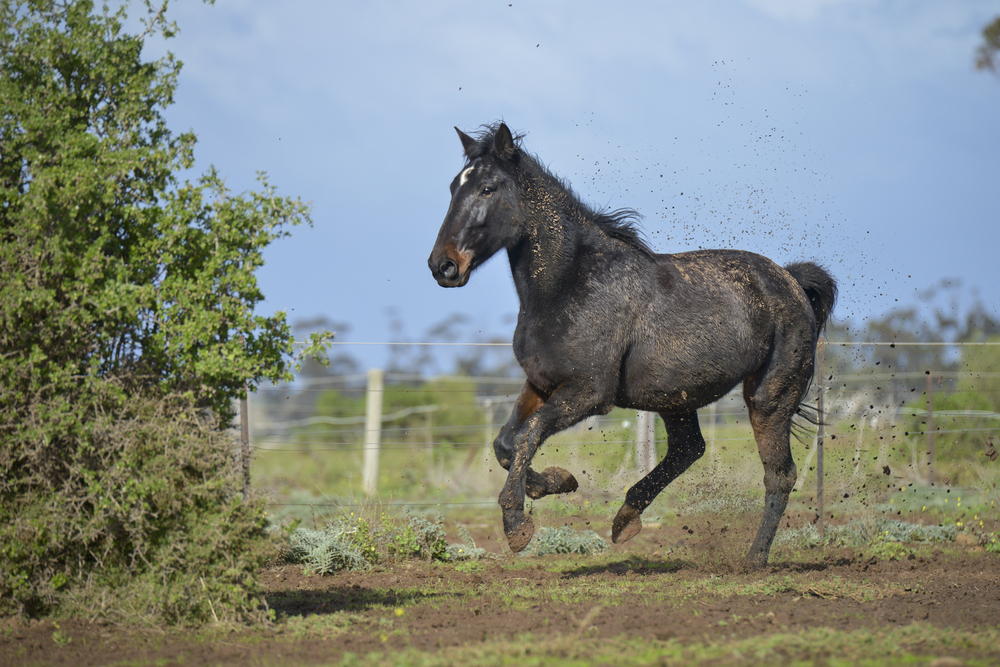
Price: The average price range for a Standardbred is $500 to $5,000.
In October 2019, the trotting horse yearling Maverick sold for a record $1.1 million at auction.
It may not be a memorable name for a breed, but the American Standardbred is recognized globally. Developed in North America, the breed has bloodlines that extend back to 18th-Century England. Standardbred horses are noted for their harness-racing ability, either at a pace or a trot.
They also compete in other show events and are used for pleasure riding. With long, muscular bodies, they are heavier than thoroughbreds, with powerful shoulders and hindquarters and strong legs. They are cooperative and suitable for beginners.
5. Friesian
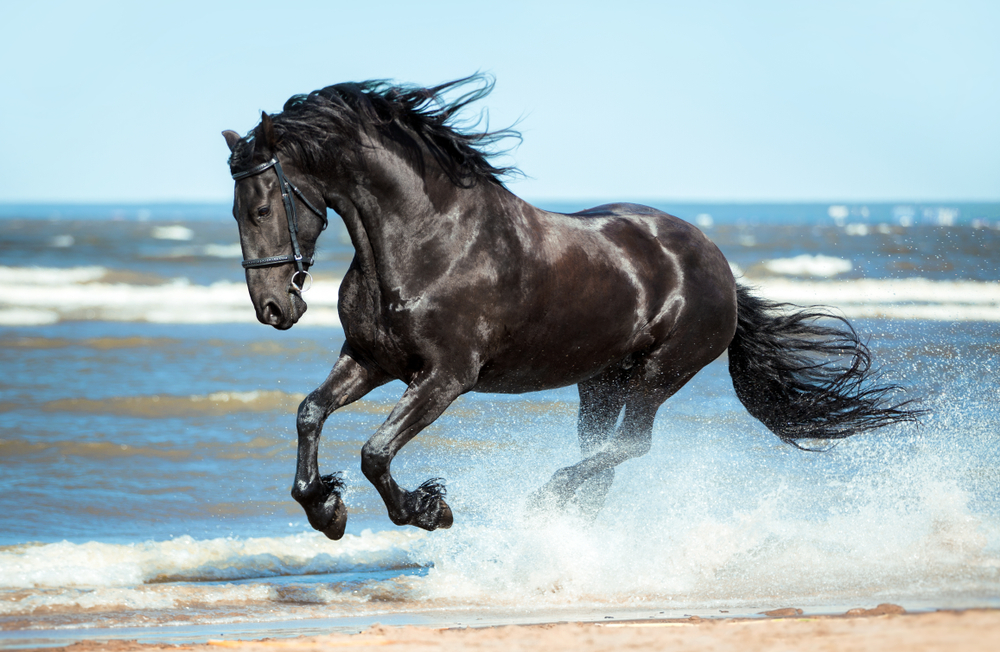
Price Range: Between $7,000 and $100,000. Expect a well-trained show horse to cost about $40,000, with breeding stallions commanding substantially higher prices.
Friesians, typically solid black with feathered feet and flowing manes and tails, the breed is an ancient one, originally from the Friesland area of the Netherlands. They are powerful and versatile, serving as mounts for knights during the Crusades. Friesians, sometimes called Dutch trotters,” was brought to America for agricultural use. They make fine carriage horses, and some excel in dressage competitions.
6. Hanovarian
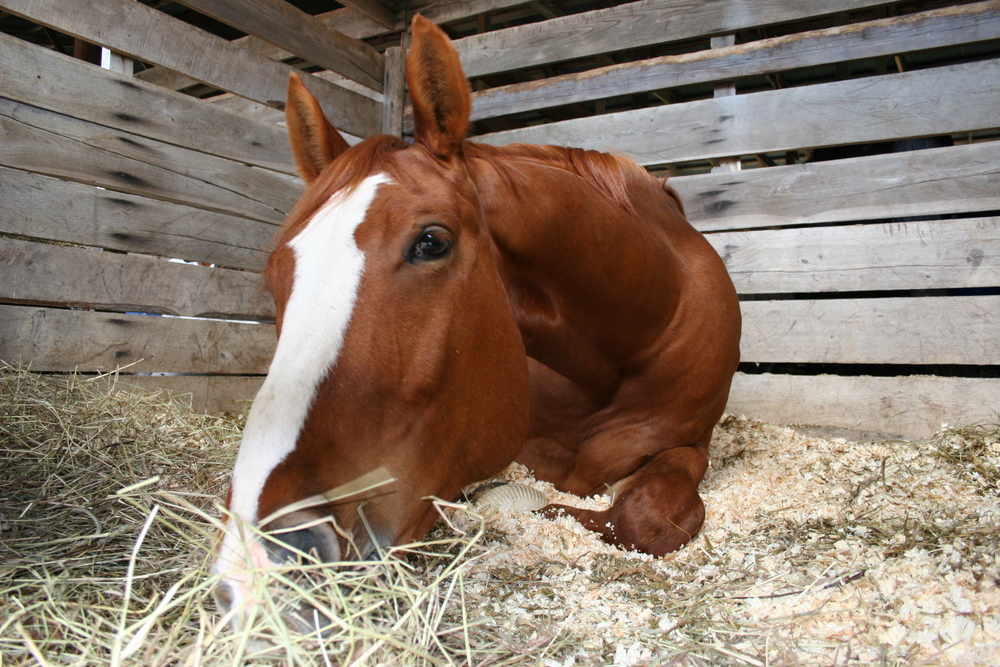
Price: Between $7,000 and $100,000
Bred to be trainable, Hanoverians are elegant. Most are relatively large, about 16-16.2 hands, with strong limbs and backs and a robust body. They are elegant, athletic steeds and are prized as show hunters with unique forms. Originally developed in Germany, farmers once used them in agriculture, as well as for military and coaches. Over the decades, breeders have moved towards traits that distinguish the breed in show jumping and dressage.
7. Oldenburg
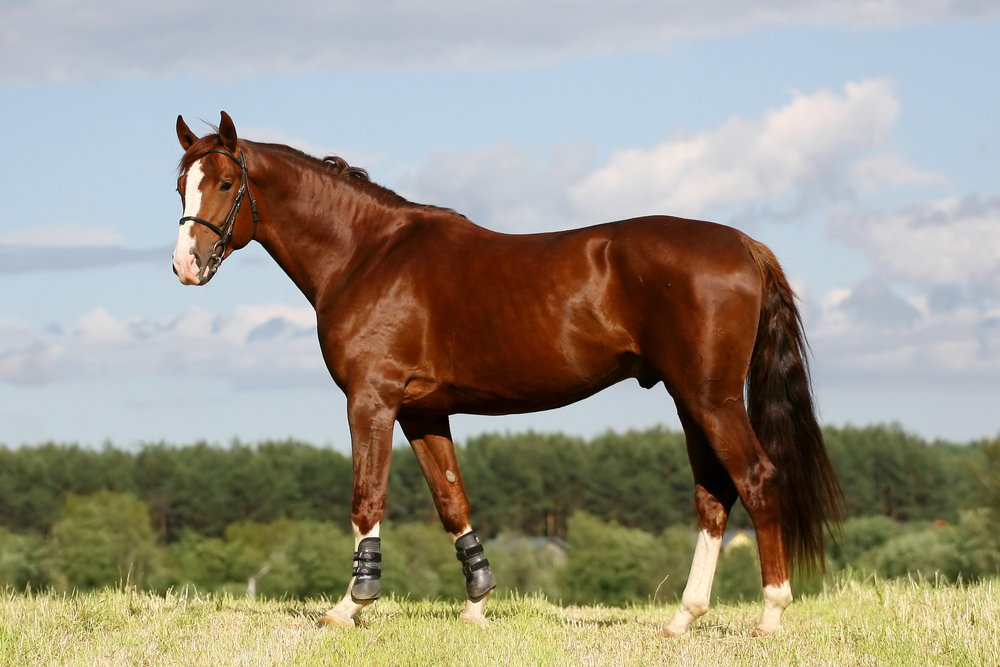
Price Range: From $4,000 to approximately $500,000. Elite broodmares and riding horses commonly sell for at least $100,000.
Originating in Germany and named for Count Graf Anton Gunther von Oldenburg, a dressage rider, these horses were later bred as war horses and given to rulers and military leaders. The breed gained notoriety as elegant riding and carriage horses, and they were in high demand in 17th Century Europe. Today, Oldenburgs are jumper stars in world competitions, and they perform well in high-level dressage.
Physically, an Oldenburg is compact but powerful, with relatively short legs, a long neck, a deep chest, and large hooves. They are usually black, brown, or grey and show a calm demeanor.
8. Arabian
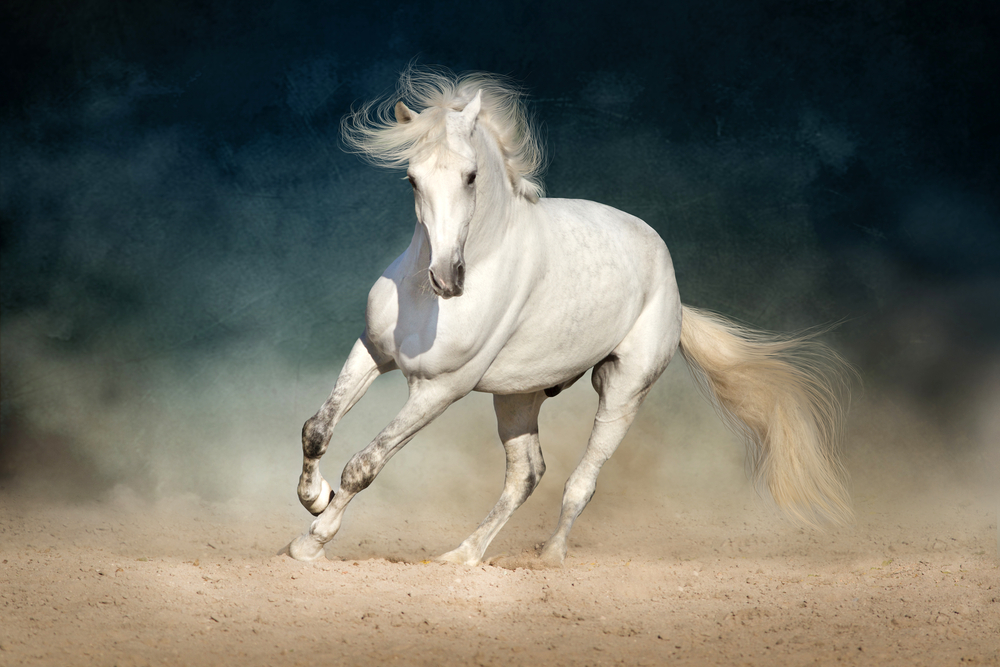
Price: Ranging from less than $1,000 upwards to $150,000 or more. Broodmares will typically sell for upwards of $30,000, but an Arabian used as a trail horse, or a pet might sell for a very reasonable $1,000 or less.
Arabians are one of the oldest existing breeds, and they are legendary. They are esteemed for their endurance, as well as their grace. Training is essential for an Arabian, and it takes time to train a young horse properly. The breed is brilliant. Historically, during the late 1800s and early 1900s, the breed was favored as a cavalry mount, and Arabians dominated endurance rides in those days. The U.S. Army bred them until well into the 1940s.
Later, in the mid-Century, a period of exploitation harmed both humans and horses. In 1986, there were more than 110,000 registered owners of purebred Arabians. However, tax law changes, unscrupulous breeders, and other issues affected the Arabian horse market; prices fell, and uncaring owners abandoned some of the horses.
Today, the pendulum has swung, and Arabians are once again recognized as great horses, prices are once again trending upwards, and the breed’s popularity is high. While owning a purebred Arabian is no longer a fad, it can be a great pleasure! Almost 70 percent of the Arabians in the United States are currently owned for recreational purposes.
9. Holsteiner
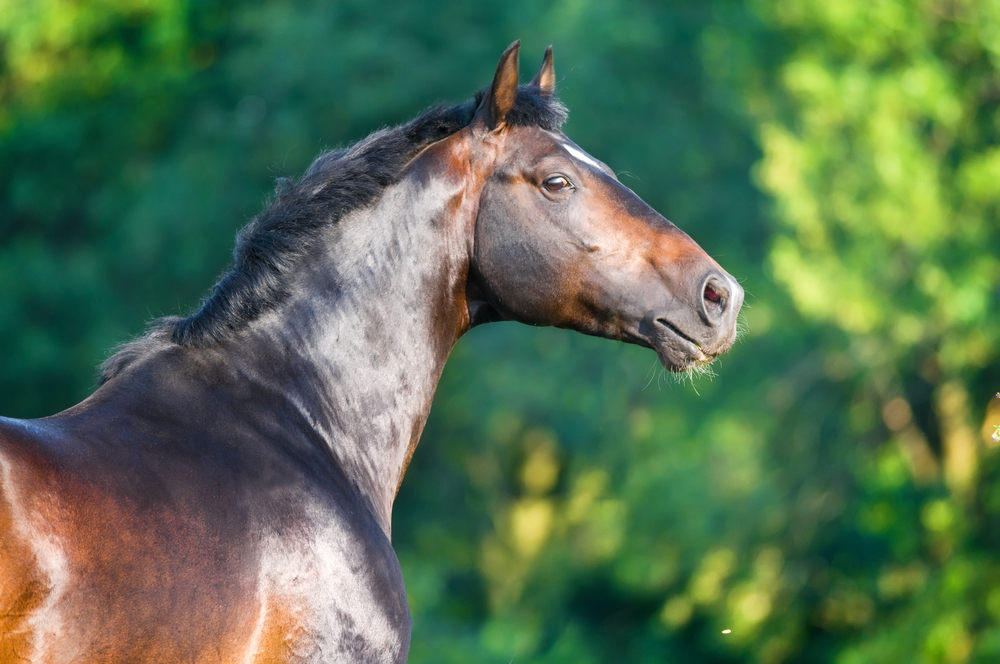
Price Range: $3,000 to $50,000
This breed, although relatively uncommon, is known for its excellent performance ability—a seemingly natural and effortless affinity for jumping, dressage, and eventing—and its good personality. Originally bred as a multi-purpose utility horse, the average life of a Holsteiner can be 35-40 years. It’s a type of German warmblood horse with powerful and elegant characteristics and has been adapted to use for Olympic sporting events.
It is considered a light horse breed, typically under 1,500 pounds, and is well-used for trail riding. These horses are also suited for ranch work and can take to the racetrack or show ring with equal ease.
10. Andalusian
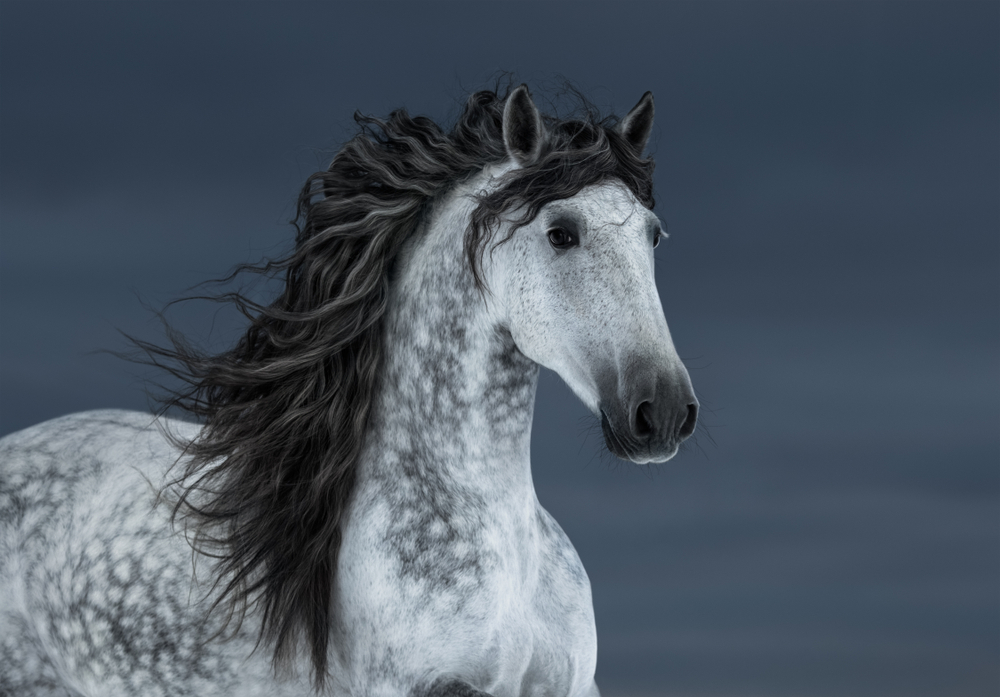
Price: The range is between $3,000 and $60,000, but a show-quality Andalusian will typically cost at least $50,000.
Considered one of the oldest known breeds, the Spanish Andalusian is also known as the Pure Spanish breed. It is the horse associated with cave paintings in that region of Spain. Napolean is credited with stealing some of these horses, helping the breed spread throughout Europe.
Prized by the nobility for centuries, Andalusians did not have to be white (they could also be gray or bay, even mottled), but the distinctive white horse was used frequently in the past as a diplomatic “tool” by the Spanish government. Sensitive, intelligent, agile, and docile, its dramatic appearance complements its natural performance skills. Andalusians are proficient in classical dressage, used for bullfighting and as stock horses, and sometimes as war horses. They have a distinctive gait and move gracefully and dramatically.
11. Gypsy Vanner
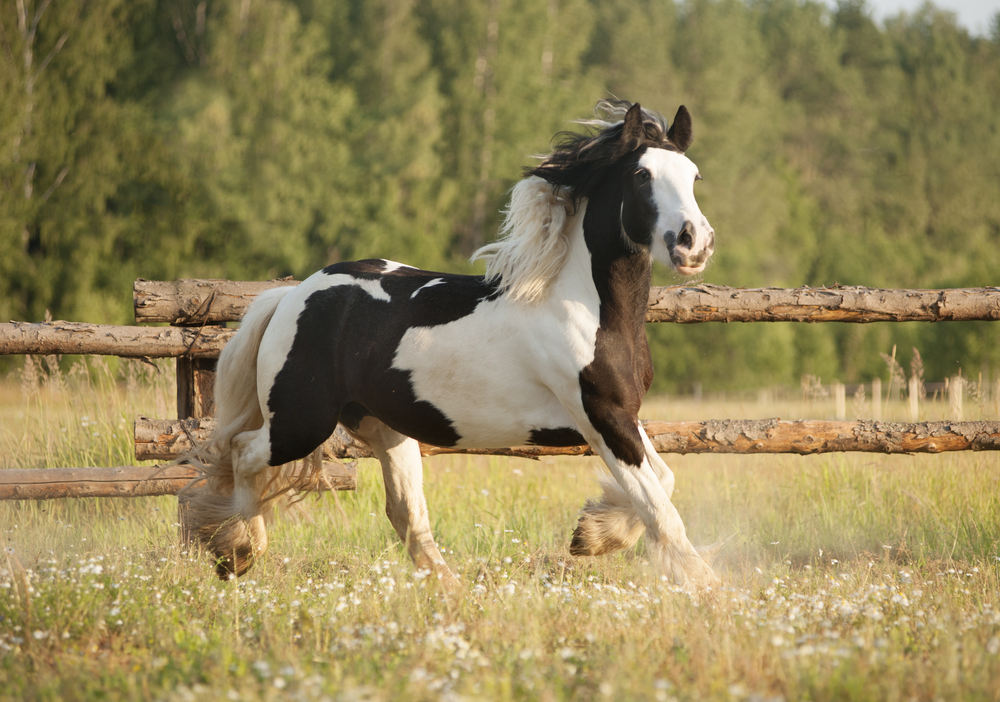
Price: Generally from $4,000 to $30,000
Considered the original carriage horse, this breed was selectively bred by Great Britain’s Gypsies as the horse to pull Gypsy caravans. It is occasionally referred to as a “people-sized” draft horse. Genetically, it is related to the Clydesdale, the Shire, and native British ponies known as Dales. The name was established only in 1996 when the first of the breed were brought to North America, and a registry was established.
Gypsy Vanners are small in stature, only 14-15 hands, but they are broad and “heavy” in appearance with long manes and tails and thick feathers behind the knees and hocks. Although “cute,” the Gypsy Vanner is a good family horse, and the breed has also been used as a therapy animal.
12. Quarter Horse
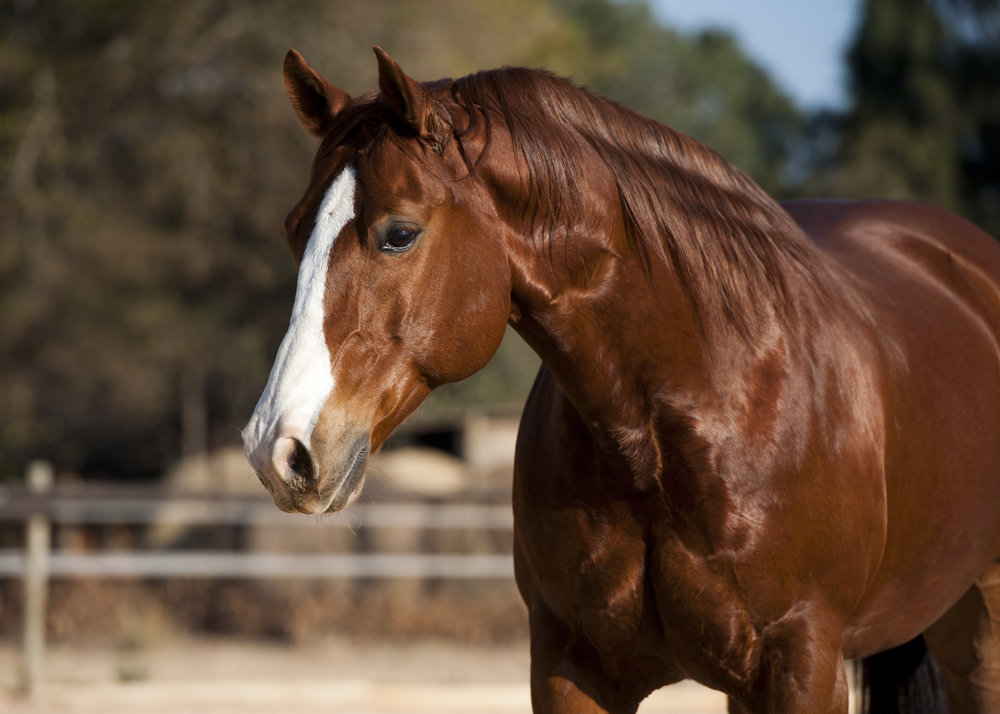
Price: The average price is around $3,500. The annual cost of upkeep is estimated to be approximately $2,500.
Sometimes considered the “world’s most versatile popular breed,” the American Quarter Horse is also one of the most diverse and adaptable breeds. It is the horse of the American West, of course. Still, the breed probably originated in colonial America, a cross between the Spanish Barb brought to Florida by Spanish explorers and fast Indian ponies in Virginia and the Carolinas. The name refers to the speed of the breed over a quarter-mile. The name stuck!
Later in its development, the original Quarter Horse received a genetic boost from interbreeding with Thoroughbreds and Western Mustangs. The result? A horse that is uniquely American and still used for everything from reining to roping, from barrel racing to trail riding.
13. Morgan

Price: Between $2500 and $4,000
The Morgan horse is another breed developed in the United States. It is the symbol of Vermont and is characterized by its compact, muscular build, smallish stature, arched neck, and classicly refined appearance. Typically weighing under 1,000 pounds, a Morgan stands under 15 hands in height but has a thick mane and tail, broad head, and expressive eyes. A versatile animal with good athletic ability, the breed was previously used to pull a buggy as well as to perform farm chores. Morgans also served as cavalry mounts and were trained for the race track. Today, they compete in equestrian events and are famous for trotting races and sidesaddle competitions.
14. Mustang
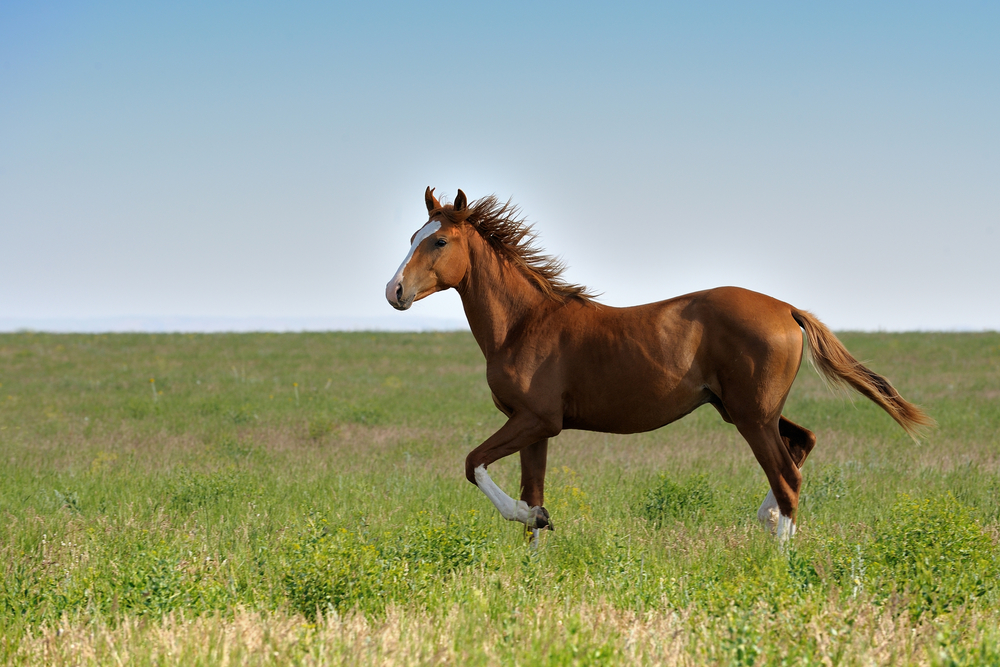
Price: $125 to $5,000
Known primarily as the wild Mustangs that roam the American West, Mustangs are a kind of Warmblood-type horse, and it is thought that they descend from Andalusian and other breeds brought initially by Spanish explorers. They are short, muscular, and hardy, known to be intelligent and admired for their strength and ability to withstand hardship. They seem “born to run” and are well-suited for harsh terrain and changeable conditions.
15. Appaloosa
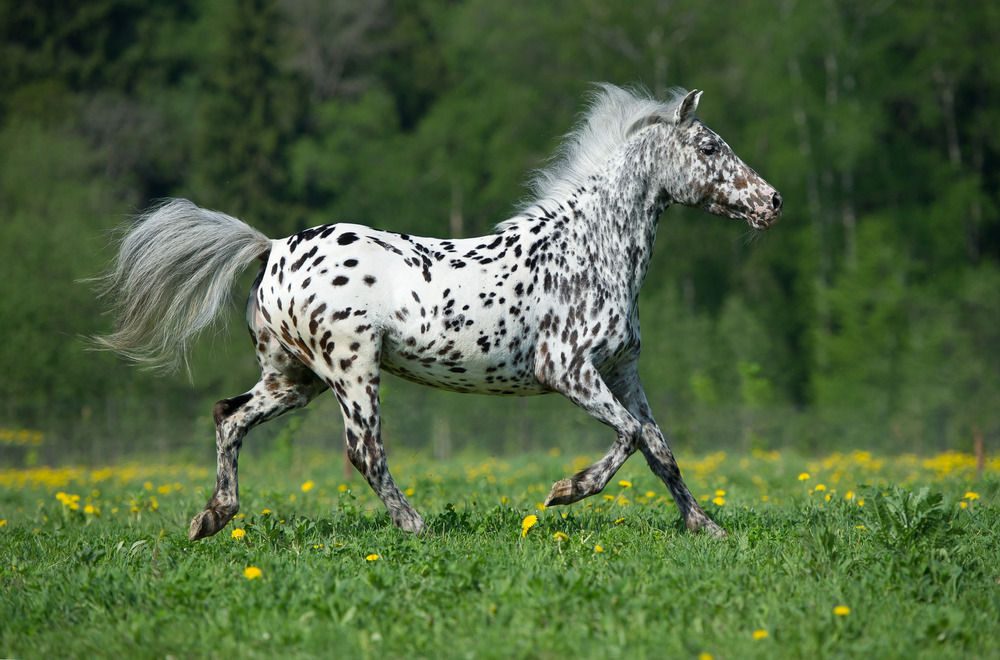
Price: Fluctuates between $1,000 and $10,000, depending on age and pedigree. Well-trained horses may sell for more.
Even though spots are not a breed requirement, the distinctive markings of Appaloosa horses are one of the things that set them apart from other breeds. They are known for being friendly, gentle, and loyal, ideal for learners and young riders. Appaloosas are muscular, with strong legs, measure 14 to 15 hands, and weigh 950 to 1,200 pounds. Their lifespan is about 30 years. The breed is thought to have been developed by the Nez Perce peoples, who originally referred to the spotted horses as Palouse.
16. American Paint
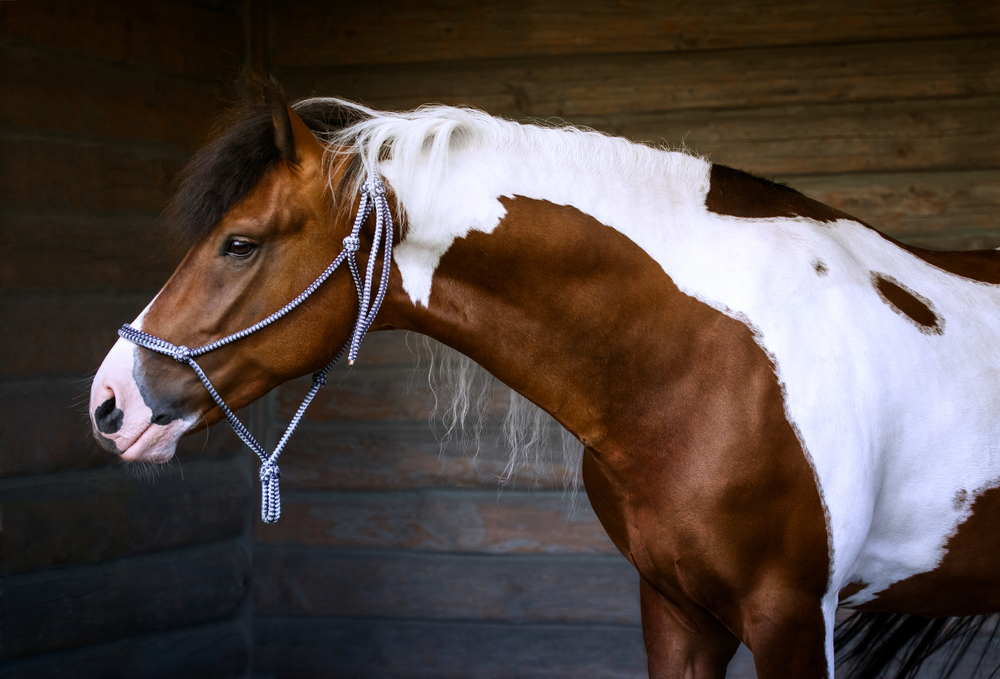
Price: Average of $1,000 to $5,000
The distinctive American Paint Horse has worldwide fans, with more than 100,000 members of the breed association in 40 different countries. The Paint has a “genial” temperament and is versatile enough to be used by riders of varied experiences and for many other purposes. Paints take to equestrian competition, are suited for general riding, and can also be put to work. Relatively small, they have solid and balanced bodies and are thought to be descended from Spanish Barb, Andalusian and Arabian bloodlines. Their two-tone coloring makes them unmistakable, and they are strong, fast, and agile but still calm, intelligent, and athletic. They can be easily trained, and they show a lot of stamina.
17. Tennessee Walker
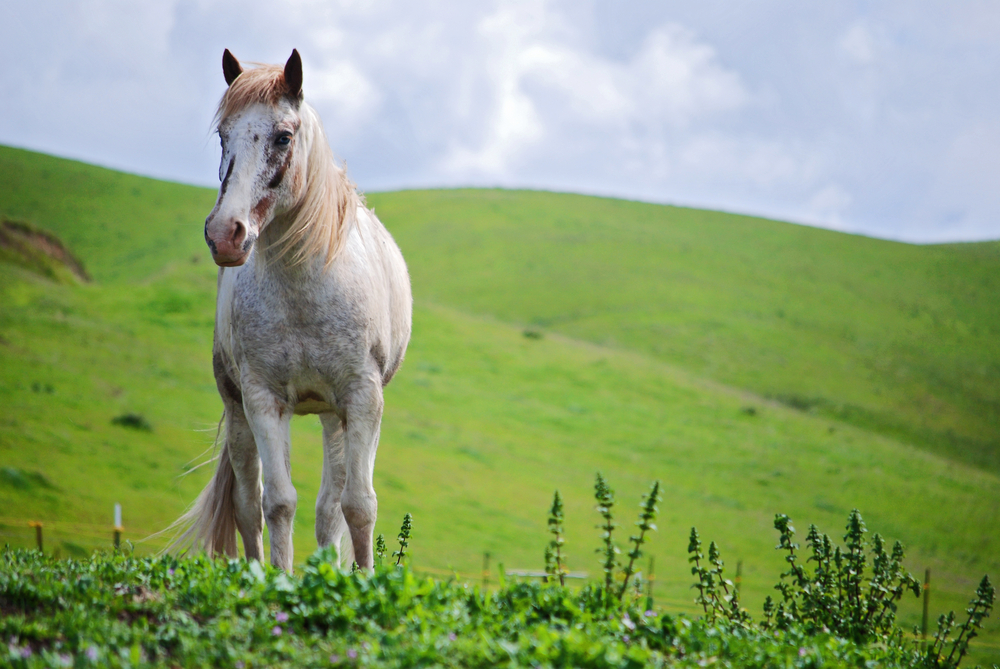
Price: Recent listings on a horse sales site vary from $600 to $8,500
The Tennessee Walking Horse, often just called a Tennessee Walker, is known for its distinctive four-beat gait. Bred initially as a workhorse for southern farms and plantations, its “running walk” makes it a good performer in the show ring, but the breed is equally suited for pleasure riding. Despite its showy movements, it is a calm breed and accepts both Western and English saddles for trail rides or performances. Tennessee Walkers have frequently been featured in films and on television, and they are still used on family farms.
18. Clydesdale
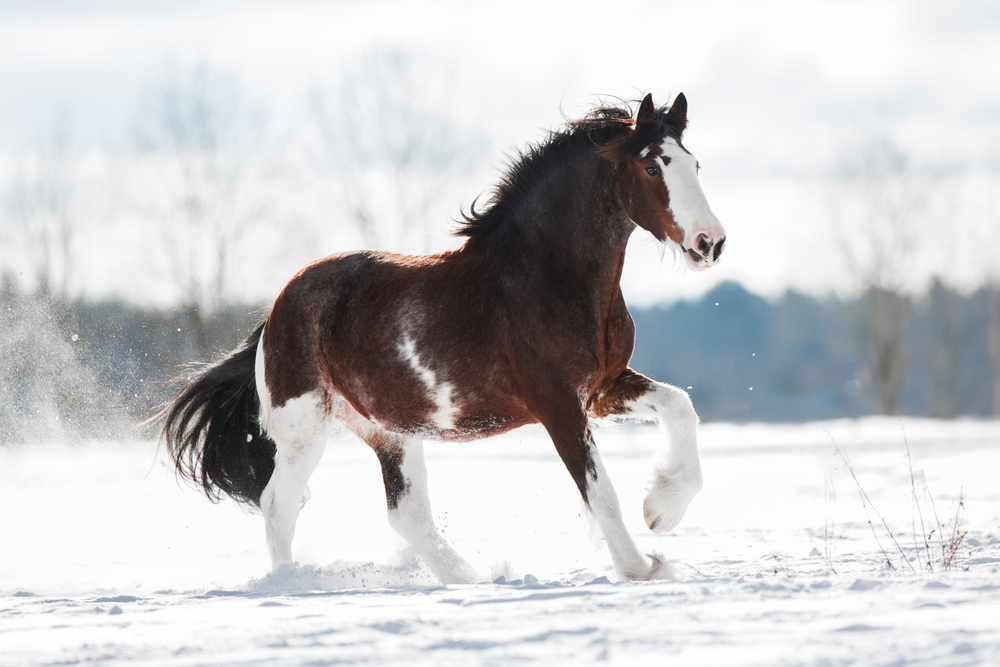
Price: Can sell for as little as 1,000, but most Clydesdales will cost between $2,500 and $3,000. Note: A Belgian Draught Horse stallion sold in 2003 for $112,500 at the Mid-America Draft Horse Sale!
Clydesdales are big horses, similar to Belgian draft horses, but they display more grace. They are also brilliant. The breed is easy to ride, easy to train, and easy to love. Who doesn’t love Budweiser Clydesdale commercials? Anheuser-Busch owns approximately 250 horses, one of the largest Clydesdale herds in the world, kept at several different locations. Clydesdales were bred for agriculture and hauling, and they excelled in those fields. Today, the British Household Cavalry uses Clydesdales as drum horses. Usually bathed in coloring, they have extensive feathering and unique white markings.
19. Lipizzaner
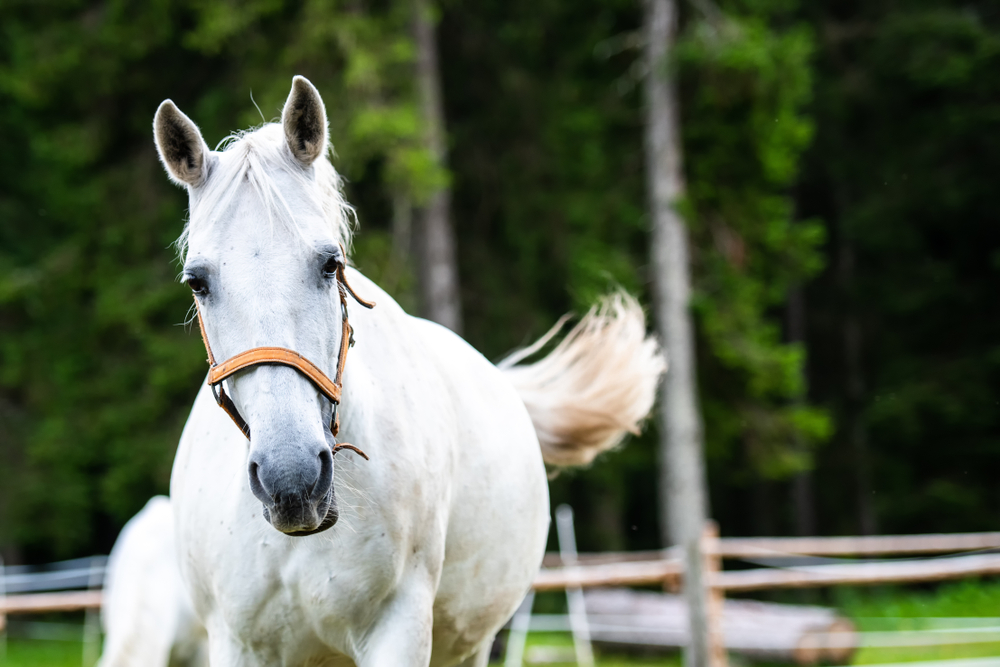
Price: A Lipizzaner horse can be purchased at a fairly reasonable price, around 4 to 5,000 Euro.
The Lipizzan is known as “the horse of royalty.” The “dancing horses are known for their dramatic appearance and their ability to perform synchronized movements with riders. The history of The Spanish Riding School responsible for the mystique surrounding the Lipizzan is fascinating, but the breed itself is unique. Although performing adults have distinctive white coats, it emerges only when horses are 6 to 10 years old. They are born gray, brown, or dark! It is truly a rare breed, noted not only for its history but also esteemed for its innate intelligence, athletic prowess, and cultural history.
20. Akhal-Teke
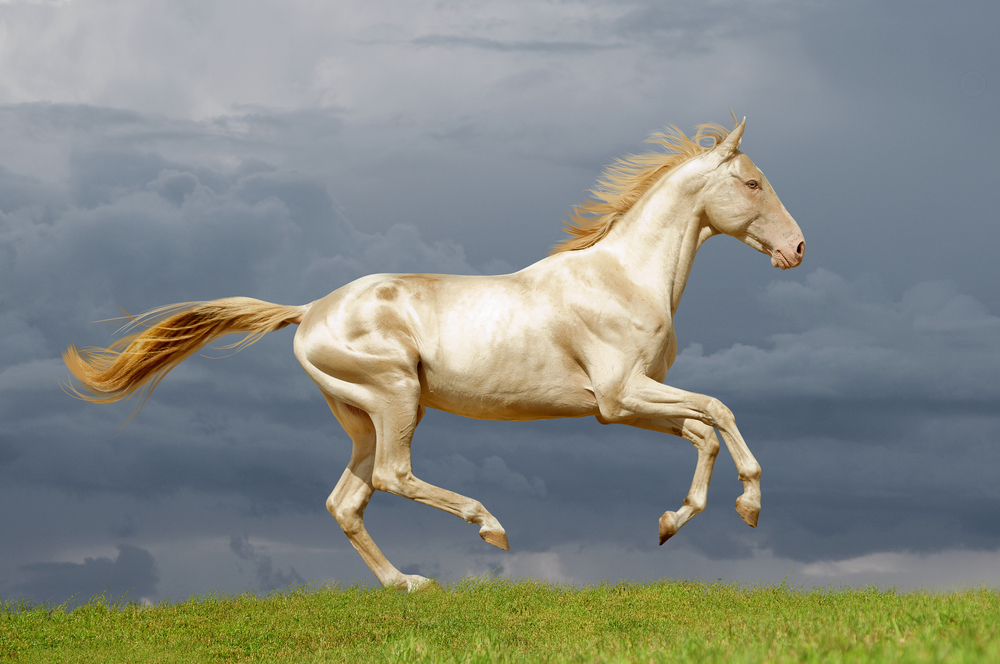
Price: Anywhere from $10,000 to $100,000, depending on several different factors
Akhal-Teke horses are considered one of the world’s oldest breeds and coveted for their rarity and beauty. That beauty mainly comes from their stunning coats, which have been described as having a metallic quality. The Akhal Teke horse breed is the national horse of Turkmenistan.
This beautiful horse’s noticeably lean physique makes Akhal-Teke an excellent horse for racing. One of the world’s oldest horse breeds has been compared to the Greyhound dog because of its slender athletic build and metallic coat.
The bond between humans and horses was forged in ancient times, and that common bond still spans continents and cultures.
